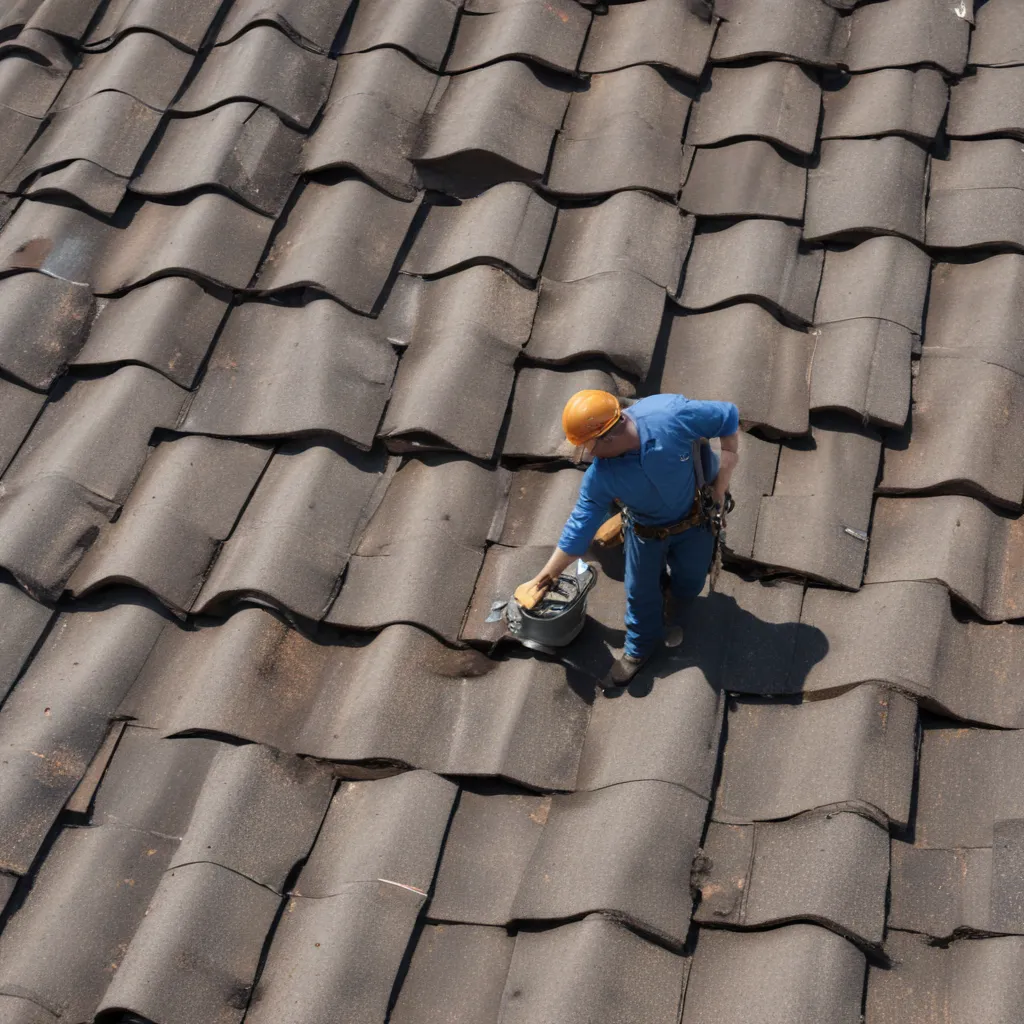
As an experienced roofing specialist, I’ve seen firsthand how a well-maintained roof can be the lynchpin of a property’s long-term performance. Whether you’re a homeowner, property manager, or construction professional, understanding the importance of regular roof inspections is crucial for ensuring your building’s energy efficiency, structural integrity, and aesthetic appeal.
In this comprehensive guide, we’ll explore the various aspects of roof inspections, from identifying common issues to optimizing energy savings and extending the lifespan of your roofing system. By the end, you’ll be equipped with the knowledge to make informed decisions about the health and longevity of your roof.
The Importance of Regular Roof Inspections
A roof is more than just a physical barrier between the elements and your living or working space – it’s a crucial component of your building’s overall performance. Regular roof inspections are the key to unlocking its full potential, as they allow you to identify and address issues before they escalate into costly problems.
Neglecting your roof can lead to a wide range of issues, from leaks and water damage to structural deterioration and even safety hazards. By proactively inspecting your roof, you can catch these problems early, implementing preventative measures that save you time, money, and peace of mind in the long run.
Moreover, regular inspections can help you maximize your roof’s energy efficiency. A well-maintained roof, with proper insulation and ventilation, can significantly reduce your building’s heating and cooling costs, making it a sound investment for both residential and commercial properties.
The Roof Inspection Process
Conducting a thorough roof inspection requires a systematic approach. Let’s dive into the key steps involved:
Pre-Inspection Preparations
Before you or a professional inspector set foot on your roof, there are a few important preparatory steps to take. First, gather any relevant documentation, such as previous inspection reports, warranty information, and records of past repairs or maintenance. This will provide valuable context and help you identify any recurring issues.
Next, conduct a visual inspection from the ground level. Look for obvious signs of damage, such as missing or curled shingles, discoloration, or debris accumulation. This initial assessment will help you identify areas that require closer attention during the on-site inspection.
On-Site Examination
When it’s time to get up on the roof, safety should be your top priority. Ensure that you or the inspector have the proper equipment, such as fall protection and non-slip footwear. Consider the roof’s slope, accessibility, and any potential hazards, and take necessary precautions to minimize the risk of accidents.
During the on-site inspection, thoroughly examine every aspect of the roof, from the flashings and soffits to the underlayment and drainage system. Look for signs of wear, damage, or improper installation, and document your findings with photographs. Pay special attention to areas prone to leaks, such as around chimneys, vents, and skylights.
Identifying Areas of Concern
As you conduct the inspection, make note of any issues that require immediate attention or further investigation. These may include structural defects, moisture intrusion, inadequate ventilation, or improper material selection. Prioritize these areas based on the severity of the problem and the potential impact on the roof’s performance and your building’s overall condition.
Optimizing Energy Efficiency
Your roof plays a critical role in your building’s energy efficiency, and a well-maintained roofing system can significantly impact your utility costs. By understanding the relationship between roof condition and energy usage, you can make informed decisions to enhance your property’s performance.
Insulation and Ventilation Considerations
Proper insulation and ventilation are essential for maintaining a comfortable indoor environment while reducing your energy consumption. Inspect your roof’s insulation for any gaps, compression, or moisture damage, as these can compromise its effectiveness. Similarly, ensure that your roof’s ventilation system, including ridge vents and soffit vents, is functioning correctly to promote airflow and prevent heat buildup.
Maximizing Thermal Efficiency
The choice of roofing materials can also significantly impact your building’s thermal efficiency. Reflective roofing options, such as metal or cool roofs, can help reduce heat absorption and lower your cooling costs. Conversely, dark-colored roofs may absorb more heat, increasing your heating and cooling demands.
By addressing insulation, ventilation, and material selection, you can optimize your roof’s thermal performance, resulting in tangible energy savings and a more comfortable indoor environment.
Long-Term Benefits of Roof Inspections
Investing in regular roof inspections is not just a short-term solution – it’s a strategic approach to protecting your building’s long-term value and performance. Let’s explore some of the key benefits:
Extended Roof Lifespan
By identifying and addressing issues early, you can extend the overall lifespan of your roof. This not only saves you from the expense of premature replacement but also helps maintain the aesthetic appeal of your property.
Preventing Costly Repairs
Catching problems during the inspection process allows you to address them before they escalate into more significant, expensive issues. This proactive approach can save you thousands of dollars in the long run, as you avoid the need for major roof repairs or even full replacement.
Enhanced Property Value
A well-maintained, energy-efficient roof can significantly enhance the overall value of your property. Potential buyers or tenants will recognize the benefits of a roof that has been diligently cared for, making your building more attractive and competitive in the market.
Conclusion
Roof inspections are not just a box to check off – they’re a crucial investment in the long-term performance and efficiency of your building. By adopting a proactive approach to roof maintenance, you’ll not only safeguard your property but also unlock substantial financial and energy-saving benefits.
Whether you’re a homeowner, property manager, or construction professional, make roof inspections a regular part of your building maintenance routine. By doing so, you’ll ensure that your roof continues to deliver the protection, energy efficiency, and aesthetic appeal that your property deserves.
For more information on optimizing your roofing system, be sure to visit Genuine Roof Systems. Our team of experienced specialists are ready to provide expert guidance and tailored solutions to meet your unique roofing needs.

























